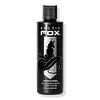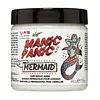What's inside
What's inside
 Key Ingredients
Key Ingredients

 Benefits
Benefits

 Concerns
Concerns

 Ingredients Side-by-side
Ingredients Side-by-side

Water
Skin ConditioningCetyl Alcohol
EmollientGlycerin
HumectantGlyceryl Stearate
EmollientPEG-100 Stearate
Propylene Glycol
HumectantStearalkonium Chloride
PreservativeGuar Hydroxypropyltrimonium Chloride
Skin ConditioningQuaternium-52
Cetearyl Alcohol
EmollientCeteareth-20
CleansingHydrolyzed Soy Protein
HumectantParfum
MaskingCitric Acid
BufferingTetrasodium EDTA
Methylchloroisothiazolinone
PreservativeMethylisothiazolinone
PreservativeBasic Blue 3
Basic Blue 7
Basic Orange 1
Basic Orange 31
CI 11055
Basic Red 51
Basic Yellow 87
Basic Violet 2
Basic Violet 16
CI 60725
Cosmetic ColorantWater, Cetyl Alcohol, Glycerin, Glyceryl Stearate, PEG-100 Stearate, Propylene Glycol, Stearalkonium Chloride, Guar Hydroxypropyltrimonium Chloride, Quaternium-52, Cetearyl Alcohol, Ceteareth-20, Hydrolyzed Soy Protein, Parfum, Citric Acid, Tetrasodium EDTA, Methylchloroisothiazolinone, Methylisothiazolinone, Basic Blue 3, Basic Blue 7, Basic Orange 1, Basic Orange 31, CI 11055, Basic Red 51, Basic Yellow 87, Basic Violet 2, Basic Violet 16, CI 60725
Water
Skin ConditioningCetearyl Alcohol
EmollientCetyl Alcohol
EmollientDistearoylethyl Dimonium Chloride
Stearamidopropyl Dimethylamine
EmulsifyingQuaternium-91
Hydrolyzed Vegetable Protein Pg-Propyl Silanetriol
Skin ConditioningHydrolyzed Wheat Protein Pg-Propyl Silanetriol
Skin ConditioningBertholletia Excelsa Seed Oil
EmollientHelianthus Annuus Seed Extract
Skin ConditioningTocopheryl Acetate
AntioxidantCetrimonium Methosulfate
AntimicrobialCetrimonium Chloride
AntimicrobialButylene Glycol
HumectantAmodimethicone
Disodium EDTA
Trideceth-12
EmulsifyingCitric Acid
BufferingSodium Benzoate
MaskingPotassium Sorbate
PreservativePhenoxyethanol
PreservativeTriethylene Glycol
MaskingWater, Cetearyl Alcohol, Cetyl Alcohol, Distearoylethyl Dimonium Chloride, Stearamidopropyl Dimethylamine, Quaternium-91, Hydrolyzed Vegetable Protein Pg-Propyl Silanetriol, Hydrolyzed Wheat Protein Pg-Propyl Silanetriol, Bertholletia Excelsa Seed Oil, Helianthus Annuus Seed Extract, Tocopheryl Acetate, Cetrimonium Methosulfate, Cetrimonium Chloride, Butylene Glycol, Amodimethicone, Disodium EDTA, Trideceth-12, Citric Acid, Sodium Benzoate, Potassium Sorbate, Phenoxyethanol, Triethylene Glycol
Ingredients Explained
These ingredients are found in both products.
Ingredients higher up in an ingredient list are typically present in a larger amount.
Cetearyl alcohol is a mixture of two fatty alcohols: cetyl alcohol and stearyl alcohol. It is mainly used as an emulsifier. Emulsifiers help prevent the separation of oils and products. Due to its composition, it can also be used to thicken a product or help create foam.
Cetearyl alcohol is an emollient. Emollients help soothe and hydrate the skin by trapping moisture.
Studies show Cetearyl alcohol is non-toxic and non-irritating. The FDA allows products labeled "alcohol-free" to have fatty alcohols.
This ingredient is usually derived from plant oils such as palm, vegetable, or coconut oils. There is debate on whether this ingredient will cause acne.
Due to the fatty acid base, this ingredient may not be Malassezia folliculitis safe.
Learn more about Cetearyl AlcoholCetyl Alcohol is a fatty alcohol. Fatty Alcohols are most often used as an emollient or to thicken a product.
Its main roles are:
Though it has "alcohol" in the name, it is not related to denatured alcohol or ethyl alcohol.
The FDA allows products labeled "alcohol-free" to have fatty alcohols.
Learn more about Cetyl AlcoholCitric Acid is an alpha hydroxy acid (AHA) naturally found in citrus fruits like oranges, lemons, and limes.
Like other AHAs, citric acid can exfoliate skin by breaking down the bonds that hold dead skin cells together. This helps reveal smoother and brighter skin underneath.
However, this exfoliating effect only happens at high concentrations (20%) which can be hard to find in cosmetic products.
Due to this, citric acid is usually included in small amounts as a pH adjuster. This helps keep products slightly more acidic and compatible with skin's natural pH.
In skincare formulas, citric acid can:
While it can provide some skin benefits, research shows lactic acid and glycolic acid are generally more effective and less irritating exfoliants.
Most citric acid used in skincare today is made by fermenting sugars (usually from molasses). This synthetic version is identical to the natural citrus form but easier to stabilize and use in formulations.
Read more about some other popular AHA's here:
Learn more about Citric AcidWater. It's the most common cosmetic ingredient of all. You'll usually see it at the top of ingredient lists, meaning that it makes up the largest part of the product.
So why is it so popular? Water most often acts as a solvent - this means that it helps dissolve other ingredients into the formulation.
You'll also recognize water as that liquid we all need to stay alive. If you see this, drink a glass of water. Stay hydrated!
Learn more about Water